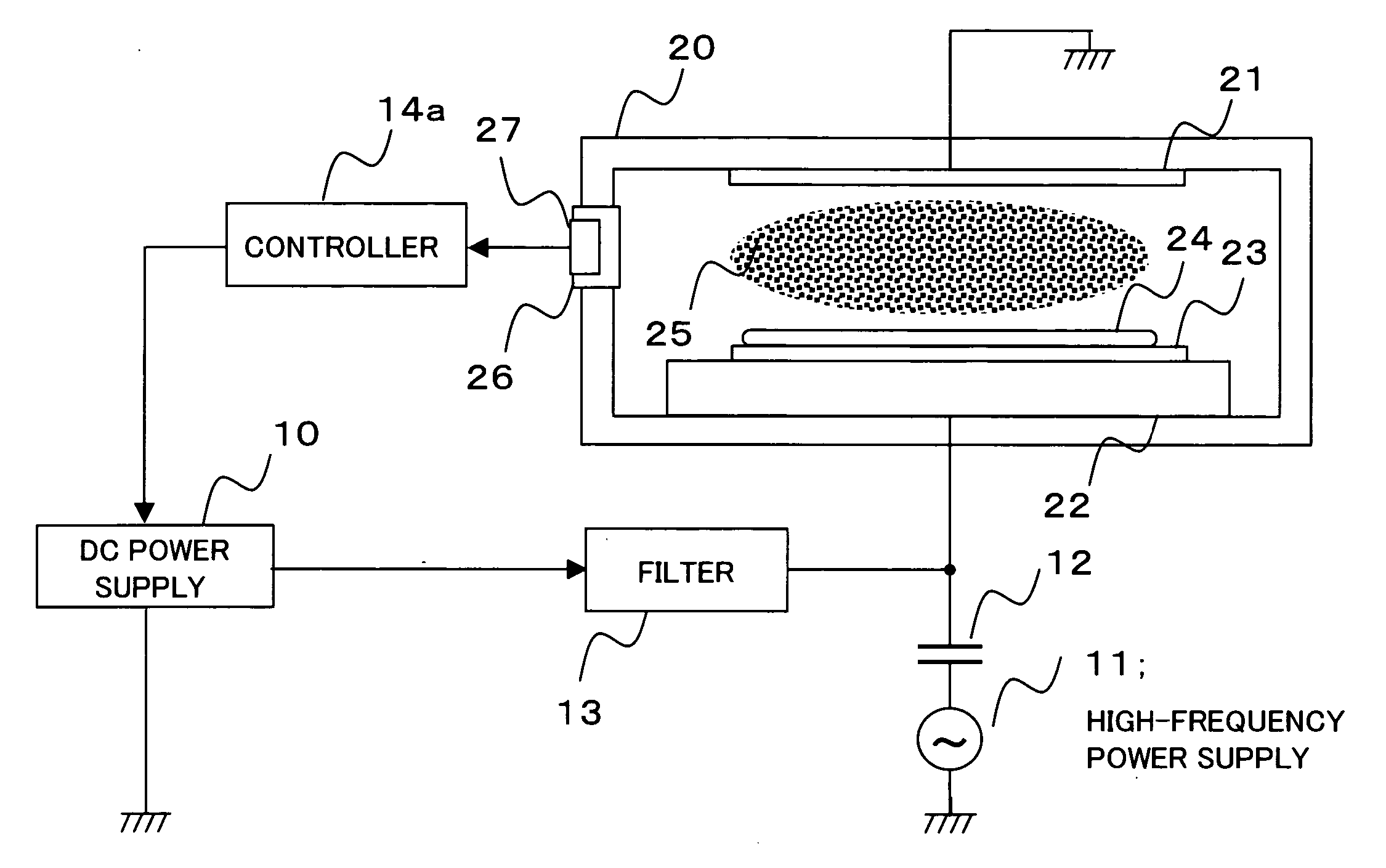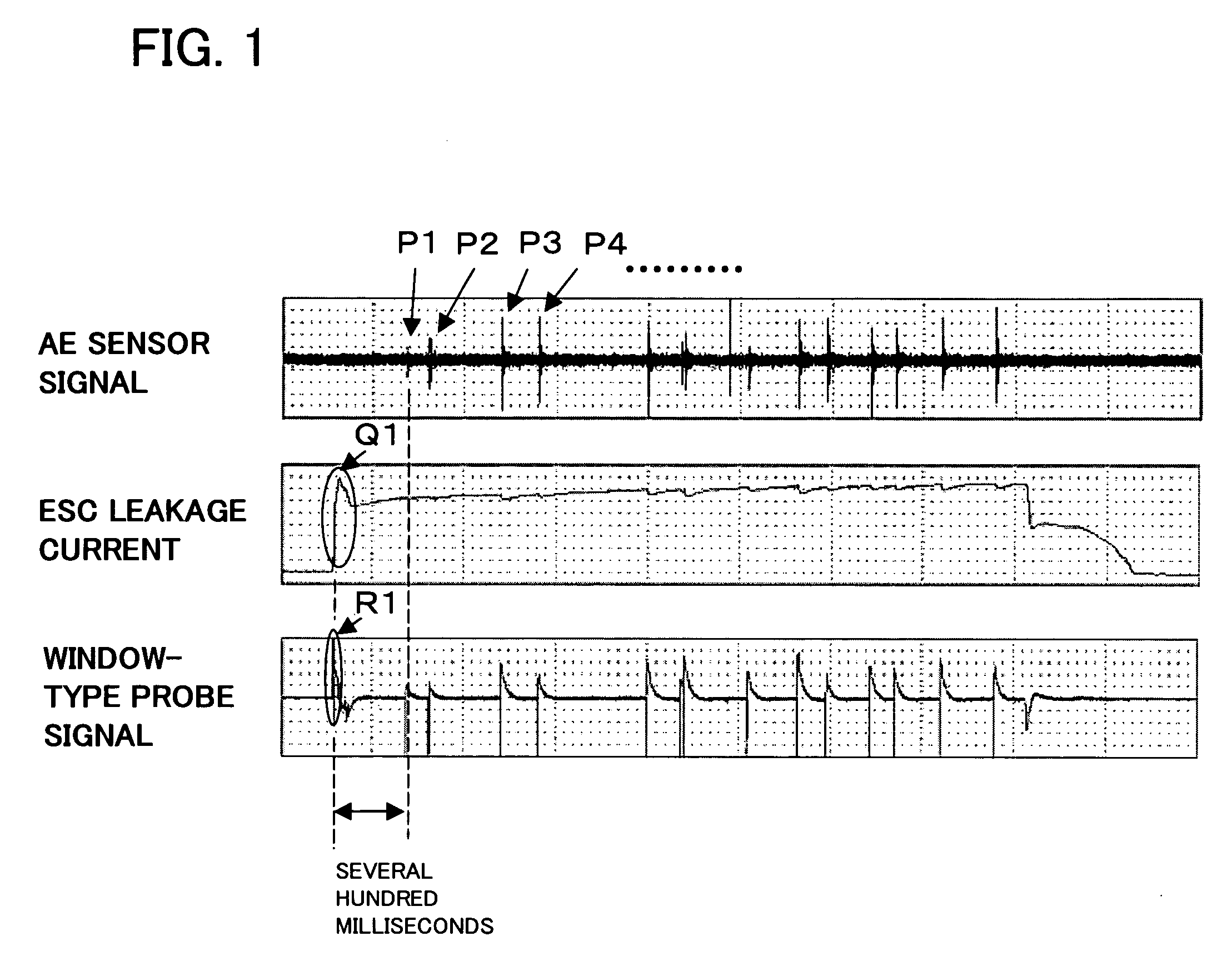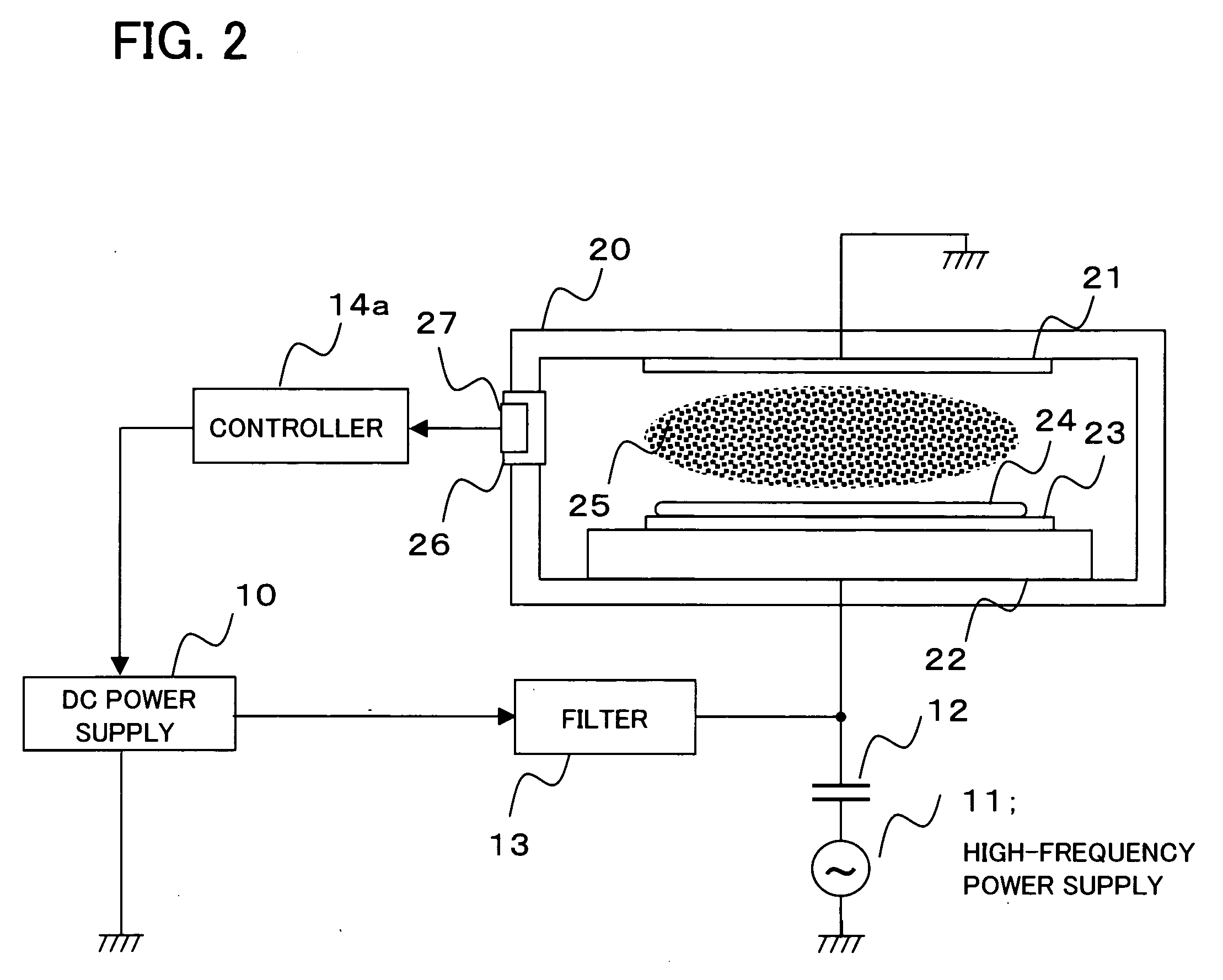Plasma processing apparatus and method of suppressing abnormal discharge therein
a processing apparatus and plasma technology, applied in the direction of electrical apparatus, electrical discharge tubes, basic electric elements, etc., can solve the problems of destroying the workpiece itself, temporarily suspending the manufacturing process, replacing the defective workpiece, etc., to reduce the increase in the cost of manufacture and suppress the occurrence of abnormal discharge in plasma
- Summary
- Abstract
- Description
- Claims
- Application Information
AI Technical Summary
Benefits of technology
Problems solved by technology
Method used
Image
Examples
first embodiment
[0035]FIG. 2 is a block diagram illustrating the structure of a plasma processing apparatus according to a first embodiment of the present invention. As illustrated in FIG. 2, the plasma processing apparatus includes a DC power supply 10, a high-frequency power supply 11, a capacitor 12, a filter 13, a controller (control unit) 14a and a chamber 20. Further, the chamber 20 has an upper electrode 21, a lower electrode 22, an insulating film 23 and a window (view port) 26. A workpiece 24 to be processed, such as a semiconductor substrate, is placed on the insulating film 23.
[0036] The DC power supply 10 generates an electrostatic adsorption voltage of from several hundred to several thousand volts and supplies the voltage to the lower electrode 22 via the filter 13 as a high-voltage DC voltage (ESC potential). The lower electrode 22 is a constituent of an electrostatic chuck that holds the semiconductor substrate, etc., by electrostatic adsorption force. Provided on the lower electro...
second embodiment
[0048]FIG. 4 is a block diagram illustrating the structure of a plasma processing apparatus according to a second embodiment of the present invention. Components in FIG. 4 identical with those shown in FIG. 2 are designated by like reference characters and need not be described again. The plasma processing apparatus of FIG. 4 has a controller 14b and a current detector 15 instead of the controller 14a and window-potential detector 27, respectively, of the embodiment in FIG. 2. Abnormal discharge is foreseen based on a deleted signal of the current detector 15.
[0049] The current detector 15 is inserted between the DC power supply 10 and the filter 13 and detects the current (ESC current) supplied from the DC power supply 10 to the lower electrode 22. The controller 14b determines whether the ESC current lies within a prescribed range and, if the ESC current is outside the prescribed range, controls the DC power supply 10 so as to diminish the absolute value of the electrostatic adso...
third embodiment
[0057]FIG. 6 is a block diagram illustrating the structure of a plasma processing apparatus according to a third embodiment of the present invention. Components in FIG. 6 identical with those shown in FIG. 2 are designated by like reference characters and need not be described again. The plasma processing apparatus of FIG. 6 has a controller 14c instead of the controller 14a of the embodiment in FIG. 2. On the basis of a foresee signal in the controller 14c, the high-frequency power that is output by a high-frequency power supply 11a is controlled. More specifically, control is exercised so as to lower the high-frequency power in order to suppress abnormal discharge. In other words, lowering the high-frequency power also is equivalent to exercising control so as to reduce the absolute value of the electrostatic adsorption voltage, in the sense that the ESC leakage current is controlled. Accordingly, by exercising control so as to reduce high-frequency power when the signal represent...
PUM
 Login to View More
Login to View More Abstract
Description
Claims
Application Information
 Login to View More
Login to View More - R&D
- Intellectual Property
- Life Sciences
- Materials
- Tech Scout
- Unparalleled Data Quality
- Higher Quality Content
- 60% Fewer Hallucinations
Browse by: Latest US Patents, China's latest patents, Technical Efficacy Thesaurus, Application Domain, Technology Topic, Popular Technical Reports.
© 2025 PatSnap. All rights reserved.Legal|Privacy policy|Modern Slavery Act Transparency Statement|Sitemap|About US| Contact US: help@patsnap.com



